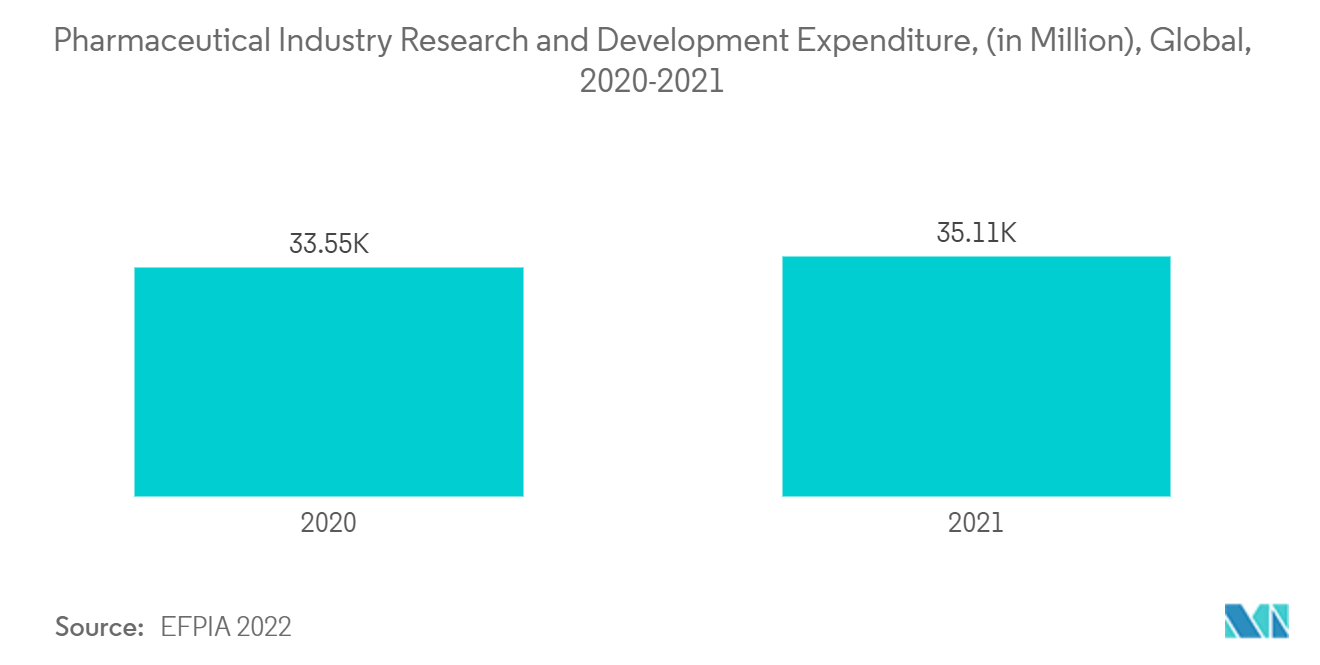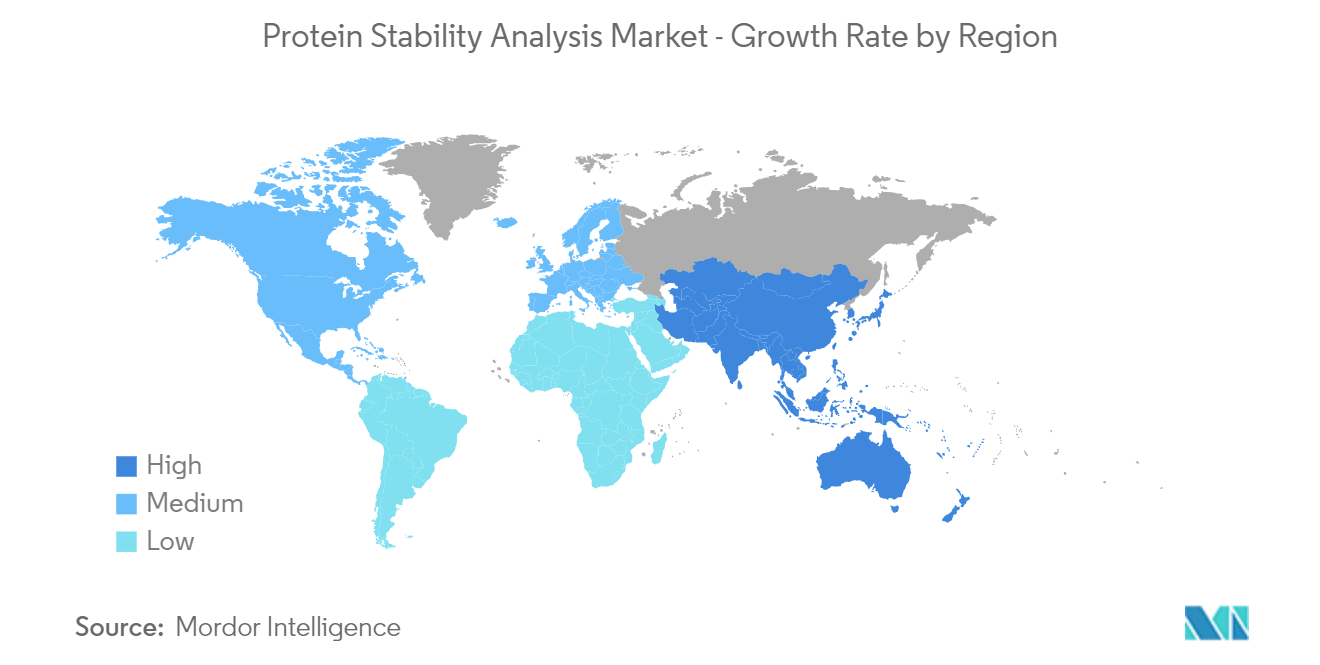Market Trends of Protein Stability Analysis Industry
This section covers the major market trends shaping the Protein Stability Analysis Market according to our research experts:
Differential Scanning Calorimetry (DSC) is Expected to Hold a Significant Share Over the Forecast Period
The differential scanning calorimetry technique has been widely used in characterizing the stability of proteins in their native form by measuring the heat required to denature a particular biomolecule, like a protein. This technique determines molecules with higher thermal transition midpoints, which are considered more stable than those with lower transition midpoints. This technique is widely used in research & development and drug discovery. The DSC segment is likely to witness growth over the forecast period due to the wide advantages of DSC such as the ease and speed with which it can be used to see transitions in materials. Due to this reason, DSC is preferred over other techniques to scan and identify proteins.
The research and development in the field of protein stability using differential scanning calorimetry are driving the market growth as it showcases the ease and speed of DSC for research. According to an article published in June 2022 in the Biosensors journal, a study demonstrated the direct thermal characterization of protein samples using a new micro-electromechanical system (MEMS)-based differential scanning calorimeter (DSC). With high throughput, the MEMS calorimeter could screen many therapeutic proteins for conformational stability based on transition temperature. Hence, such advancements in DSC associated with protein analysis are likely to boost market growth over the forecast period. The importance of research and development (R&D) for the pharmaceutical industry is evidenced by the cumulative R&D expenditure in the sector. It has been observed that R&D spending is increasing each year and several pharma and biotech companies are focusing on strengthening their R&D facilities which are ultimately driving the growth of the market studied. The spending on research and development (R&D) by various pharmaceutical companies and government organizations has been increasing recently in the United States, which is anticipated to drive market growth over the forecast period. For instance, as per the 2022 report from EFPIA, in 2021 North America accounted for 49.1% of world pharmaceutical sales compared with 23.4% for Europe. As the R&D expenditure and sales increase, the demand for protein stability analysis techniques like DSC is expected to increase thereby boosting the market growth.

North America is Expected to Dominate the Market During the Forecast Period
The presence of well-established research and development institutions and their high investment in the region is driving market growth over the forecast period since the research initiatives are likely to utilize protein stability studies for accurate results. For instance, as per the Statistics Canada June 2022 report, in-house spending on R&D in 2021 was expected to grow by 3.5%, reaching USD 23.4 billion. Companies expect more modest growth in their in-house R&D spending in 2022, with total R&D spending anticipated to increase by 1.7% to USD 23.8 billion.
Furthermore, investments by the government and private companies in genomic and proteomic research are likely to drive market growth in the North American region. For instance, in February 2021, through a merger, Seattle-based Nautilus Biotechnology entered the public market and received USD 350 million to accelerate the development of its protein analysis technology for drug discovery and diagnostic applications. Moreover, in September 2022, Stanford University Mass Spectrometry Proteomics Seed Grants provided a research grant of USD 10,000 to researchers aiming for new mass spectrometry projects and new methodologies taking advantage of the capabilities of recently added research instrumentation.
Additionally, genomic as well as proteomic research works in the North American region promote market growth since they identify the need for protein stability study and utilize the reagents and equipment associated with stability studies. For instance, as per the article published in May 2022 by MDPI which was supported by the National Institute of Respiratory Diseases 'Ismael Cosío Villegas,' Mexico, a study showed that proteomics has enabled the identification of novel allergens that can be used in serodiagnosis and has made it possible to analyze thousands of proteins in a single analysis.


